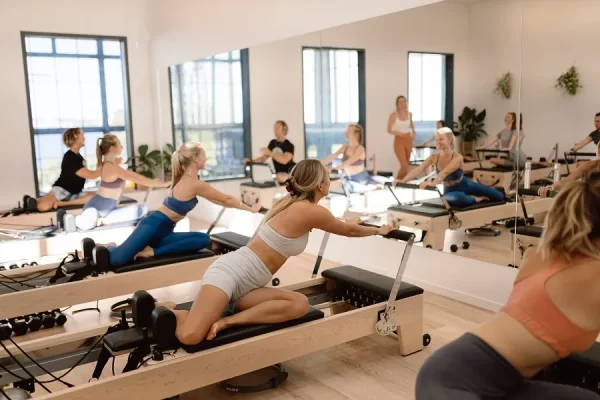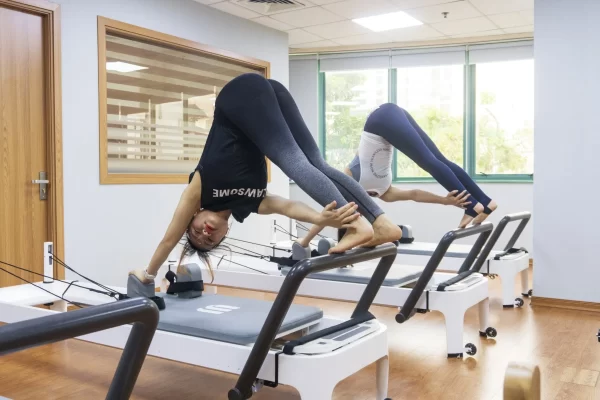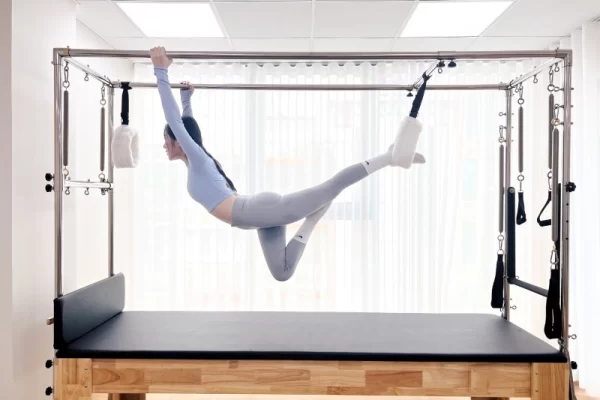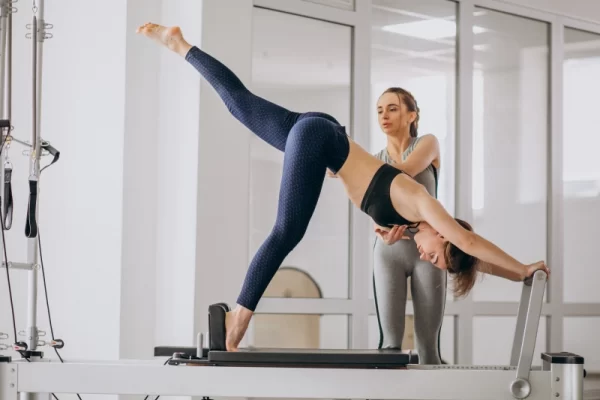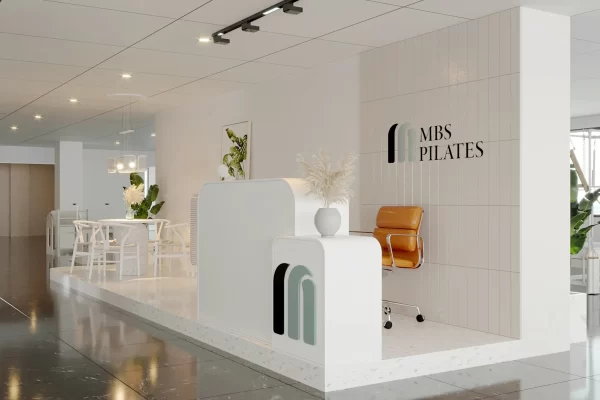9 Pilates Equipment You Should Know: A Complete Guide for Effective Training
21/11/2025Discover the 9 Pilates equipment you should know to enhance strength, mobility, and safety. Learn how each tool supports effective and proper Pilates practice.
History of Pilates Equipment Development
Joseph Pilates first developed his training equipment in 1912 while stationed at an internment camp during World War I. To help bedridden German soldiers regain strength, he attached springs to metal hospital beds so they could exercise and recover.
After migrating to the United States in 1926, Joseph Pilates submitted his first patent for the Pilates Reformer, inspired by the modified beds he created earlier. He later designed other iconic pieces such as the Cadillac and the Wunda Chair at his New York studio.
9 Pilates equipment used today
Choosing the right Pilates equipment is essential for safe, effective training. Below is a detailed list of the 9 Pilates equipment most widely used today, helping you better understand their purpose and how to use them for maximum results.
1. Pilates Mat
The Pilates mat is the most commonly used tool for home workouts. Many people confuse it with a yoga mat, but a Pilates mat is typically thicker, smoother, and sometimes larger. It is especially helpful for spine focused exercises, reducing the risk of injury and providing proper support.

Pilates mat.
2. Pilates Ring (Magic Circle)
The Pilates Ring, also known as the Magic Circle, is a lightweight circular resistance tool that’s easy to carry. Its design provides assistance or added challenge during workouts. The ring is often paired with a mat or other Pilates equipment for a more dynamic session.
3. Pilates Band (Resistance Bands)
Pilates bands or resistance bands are essential pieces of Pilates equipment. Like mats and rings, they create additional resistance, increasing the effectiveness of core focused exercises. However, their design and usage may vary across different styles of Pilates.
These bands come in various lengths and resistance levels, from light to heavy. Key benefits include:
- Providing resistance to enhance support.
- Increasing exercise difficulty.
- Strengthening the core.
- Adding variety beyond mats and rings.
4. Pilates Reformer
The Pilates Reformer is one of the most iconic and indispensable pieces of Pilates equipment. Invented during World War I, the Reformer was originally constructed from a bed frame and springs to assist patients with rehabilitation and strength building.

Reformer exercise machine.
A Reformer consists of a rectangular wooden or metal frame with a padded carriage that slides along the rails. One end features a footbar, while the other includes two long straps with handles attached to a pulley system. Resistance is adjusted by adding or removing springs.
Benefits of the Pilates Reformer:
- Enhances spinal mobility.
- Supports smoother movement patterns.
- Strengthens the core and entire body.
- Improves technique.
- Increases exercise difficulty.
- Promotes balance and coordination.
- Boosts flexibility and range of motion.
- Enhances overall mobility.
5. Cadillac (Trapeze Table)
The Cadillac, also known as the Trapeze Table, is a versatile piece of Pilates equipment that supports a wide range of movements. It features a cushioned table surface and a metal frame with vertical posts. Attached to the frame are bars, push through bars, soft straps, and crossbars to provide resistance or assistance.
The Cadillac is suitable for both beginner mat based exercises and more advanced movements. You can train in multiple positions, including kneeling, lying, or standing.
Benefits of the Cadillac include:
- Rehabilitation support.
- Increased exercise complexity.
- Improved stability.
- Better overall body balance.
6. Pilates Chair (Wunda Chair)
The Pilates Chair, also called the Wunda Chair, is a compact piece of equipment originally invented by Joseph Pilates. It features a wooden box with a padded seat and a pedal attached to adjustable springs. This allows resistance to be customized for different levels of training intensity.

Pilates Chair.
Exercises on the Chair are commonly performed in standing or seated positions, but can also be done with the body pitched forward or backward.
Benefits of the Pilates Chair:
- Enhances post injury recovery.
- Improves athletic performance.
- Builds core strength.
- Promotes balance.
- Improves foot control and lower body strength.
7. Ladder Barrel
The Ladder Barrel is an original Joseph Pilates invention, consisting of a padded, leather covered barrel connected to a wooden ladder. These components are joined by an adjustable sliding frame.
This Pilates equipment is ideal for exercises targeting spinal mobility and improving range of motion. It is also beneficial for abdominal and oblique work.
Benefits of the Ladder Barrel:
- Expands spinal mobility.
- Strengthens the abdominals and obliques.
- Supports flexible and varied training.
8. Foam Roller
The foam roller is a small but popular piece of Pilates equipment. Made from dense foam and shaped like a long cylinder, it aids in self massage and muscle relaxation especially for the back and legs. When combined with mat exercises, foam rollers can enhance comfort and effectiveness.
By sitting or lying on the floor and placing the roller under the targeted muscle group, you can apply pressure to release tension. This reduces injury risk and improves recovery. Even individuals with a sedentary lifestyle can benefit from its ability to ease shoulder and back discomfort.
Benefits of the Pilates Foam Roller:
- Relieves muscle tension.
- Accelerates recovery and reduces muscle strain.
- Improves range of motion.
- Builds core strength.
- Enhances coordination and technique.
9. Pilates Ball
The Pilates ball is one of the most widely used tools in fitness. Made of soft, air filled rubber, it is also used in gym and yoga workouts, though its application in Pilates is unique.
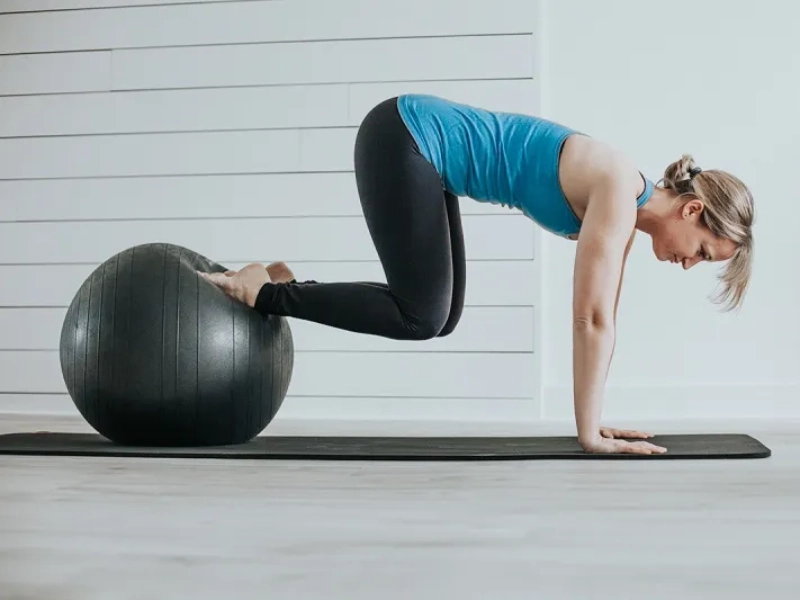
Pilates Ball.
In Pilates, the ball is used for intermediate level movements combined with mat work, allowing full body activation. It is also effective for strength building exercises such as hamstring curls and hip lifts.
Benefits of the Pilates Ball:
- Increases muscle activation.
- Improves coordination and balance.
- Enhances mobility.
- Builds strength.
- Challenges stability and control in all directions.
Understanding and properly using these 9 Pilates equipment is essential for your training journey. These tools not only build strength and flexibility but also ensure safety and maximize workout efficiency. Whether you’re a beginner or a seasoned practitioner, this complete list of 9 Pilates tools will help you appreciate the purpose and benefits of each one. Get ready to explore and elevate your Pilates experience with confidence and inspiration!

